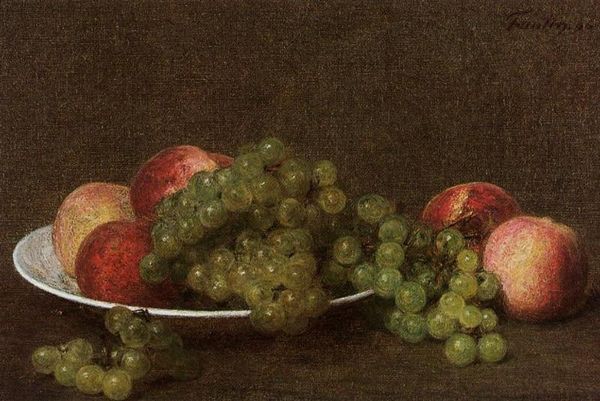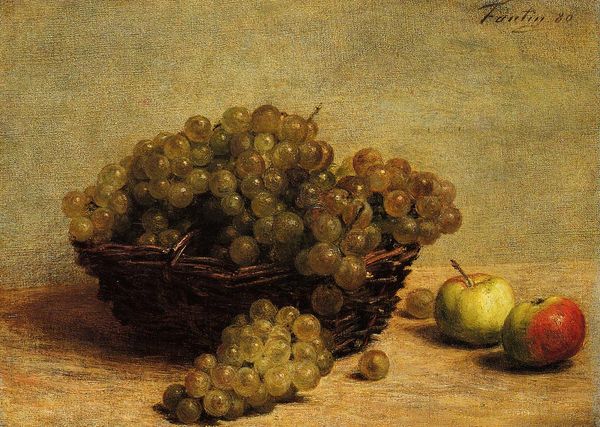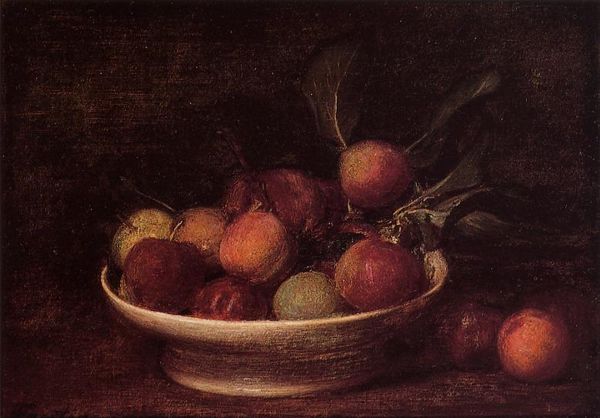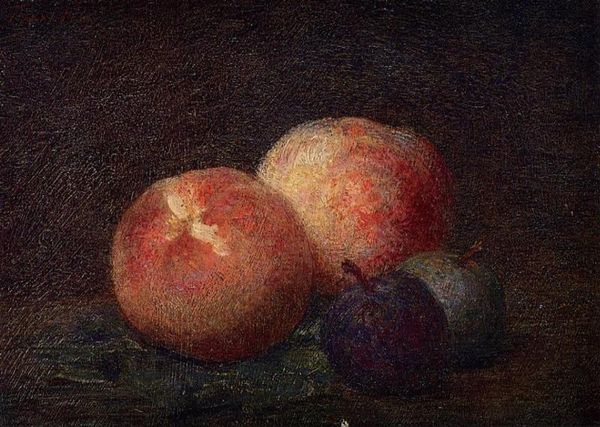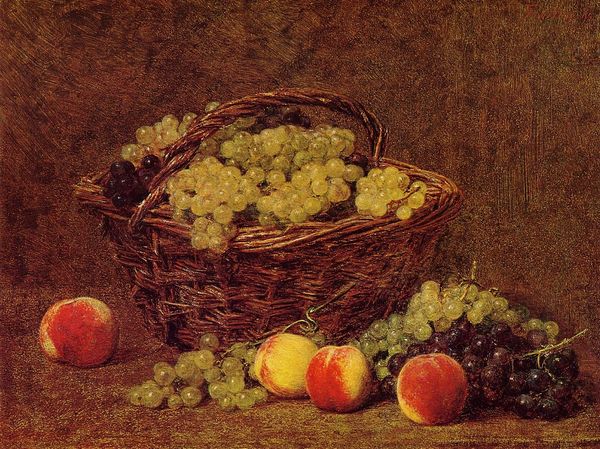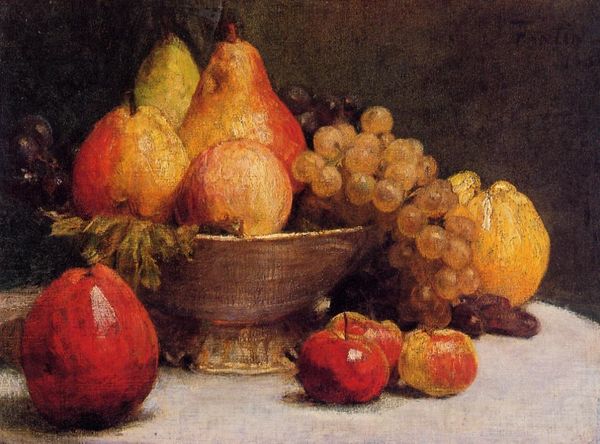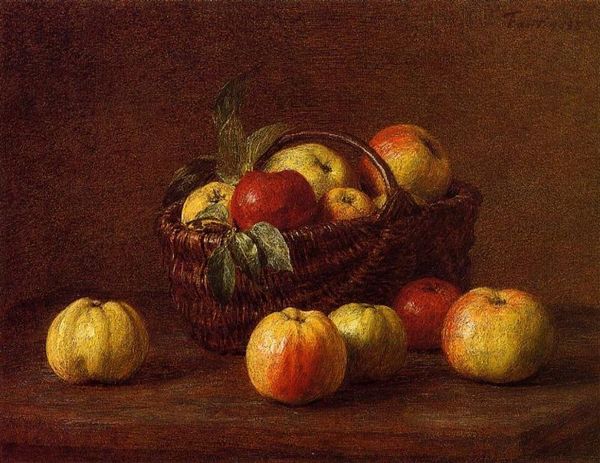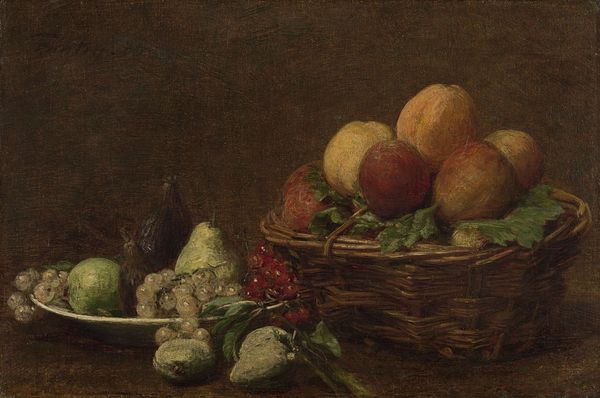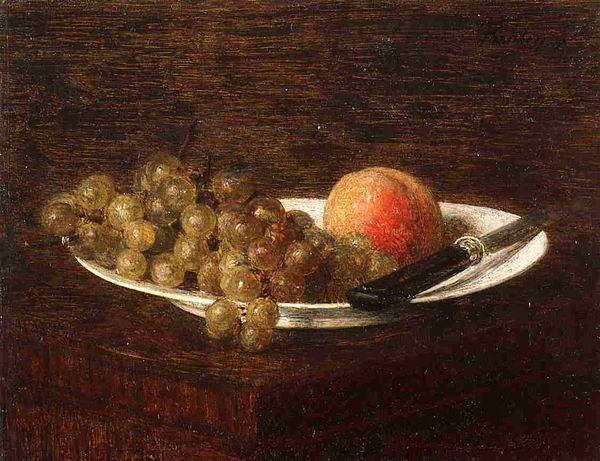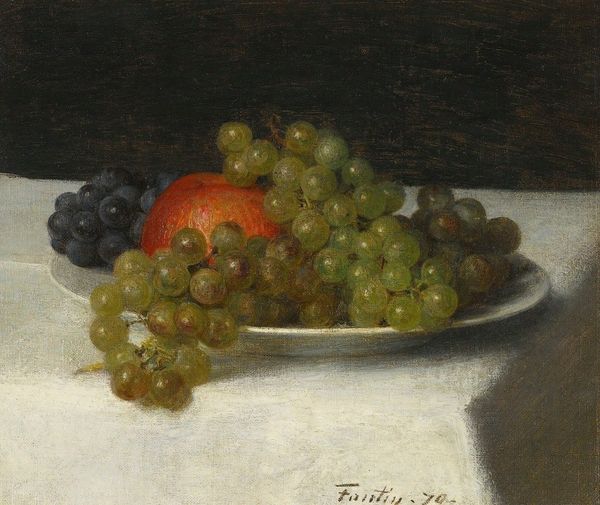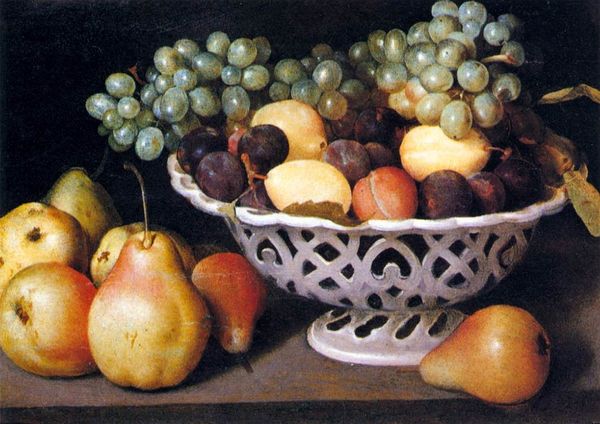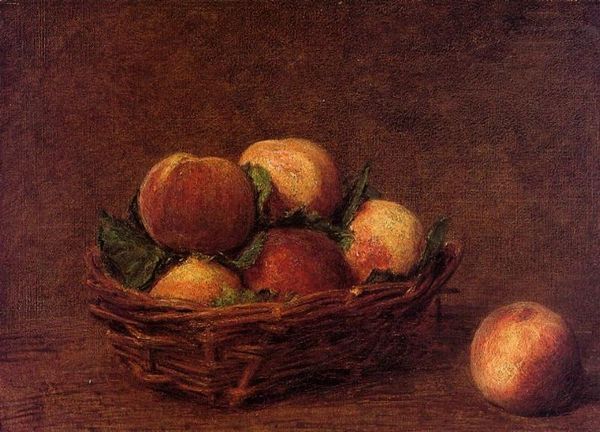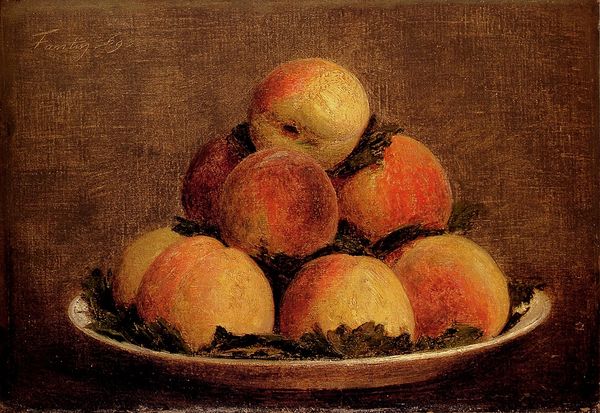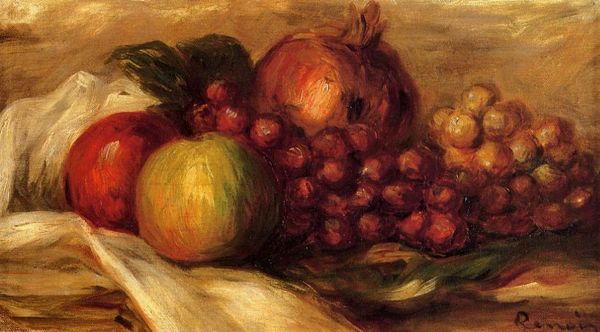
Copyright: Public domain
Curator: Henri Fantin-Latour’s “Still Life with Grapes and a Peach,” painted in 1895, is a late example of his engagement with the still life genre, rendered here with oils. What are your initial thoughts? Editor: Somber. Rich but undeniably subdued. The palette is gorgeous in its muted intensity. There is a melancholy here, too, perhaps a comment on the fleeting nature of beauty, like a momento mori. Curator: Precisely. Fantin-Latour often utilizes this muted, almost tenebrist approach. Note the composition. See how the strong diagonal directs our eye across the forms? The grapes are massed together, individual yet unified. The solitary peach in the lower left provides visual grounding and balance. Editor: Yes, that peach almost anchors the ephemeral quality of the fruit. I think that his strategic arrangements invite conversations about class, wealth, and the historical development of colonialism related to fruit that we would have not had in Europe centuries before. What are we consuming? Curator: Intriguing! Formally speaking, the use of impasto is particularly effective, wouldn’t you agree? The paint handling lends texture to the surfaces, capturing light and shadow with nuance and subtlety. Observe how he builds up the grapes in layers. It enhances their tactility. Editor: Certainly. You can feel the artist's hand. Thinking about the way this was made—by whom and for whom? Are there feminist implications embedded in this image? Perhaps he intended this to hang in a bourgeois parlor. Curator: While context matters, the appeal of this still life, I think, also lies in its enduring visual properties— the careful balancing of forms, colors, and textures into a pleasingly coherent whole. Editor: Perhaps. Yet, for me, that coherency isn't divorced from broader discourses that should inspire our own moment. However, on purely visual terms, Fantin-Latour's work continues to yield so much, it inspires endless study. Curator: Yes, and perhaps, that careful structure is the place for that critical engagement. A final note, then: Fantin-Latour has offered us much to consider in how form and context create rich meaning. Editor: I agree. We have, perhaps, only scratched the surface today!
Comments
No comments
Be the first to comment and join the conversation on the ultimate creative platform.
